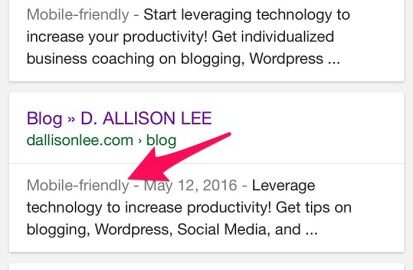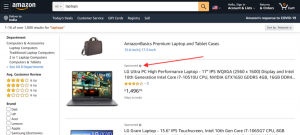Bounce Rate. Calls to Action. Lead magnet. Inbound Marketing. What do these terms have in common? They’re all marketing terms you will likely come across as you begin to promote your small business or freelancing gig. And, they’re also discussed in today’s blog post (along with a few others), so be sure to bookmark this post.
10 Marketing Terms You Should Know
Chances are you’ll come across the ten marketing terms listed below in your Internet travels. Chances are they may sound vaguely familiar or maybe you have no idea what they mean or why they matter.
Well, I’ve got you covered. Clearly, this isn’t an exhaustive list, but it will cover some basic terms you should know (not in any particular order).
1. Lead Magnet
A lead magnet is a juicy, irresistible, and attractive offer or download that you give to prospects in exchange for their contact information. Basically, the lead magnet gives the user a tremendous amount of value — so much so that they are willing to hand over one of their prized possessions: their e-mail address.
Though a lead magnet offers great value, it doesn’t have to be complex or take a lot of time to create. It should, however, solve a problem that the user has.
Lead Magnets You Can Share:
- Website Assessment
- Social Media Assessment (this is one of my lead magnets)
- Swipe File
- eBook
- Blog Post Template (this is one of mine, too!)
- Reports
- User Guides
- Checklist
- Resource or Tools List
- eCourse
- Webinar or Teleclass
- Free Consultation
- Special Pricing
- Free Shipping
2. Landing page
A landing page is a lead generation tool with a specific focus of getting the contact details of prospects. You will notice that landing pages typically have sign up forms to capture that information.
The landing page — even if it resides on your main website — typically doesn’t have any navigation. This is to discourage the viewer from clicking away from the page so that they can connect with the offer or lead magnet on the landing page.

So, you’re probably wondering if your lead magnet could be the marketing offer listed on the landing page. And, the answer is yes. Again, the goal is to capture the user’s contact information in exchange for something they find very desirable.
Create Great Landing Pages
- Unique selling point (USP) with clear expectations
- Compelling and clear headline
- Concise explanation of benefits (“What’s in it for me?”)
- Good grammar
- Strong call to action
- Call to action buttons that stand out
- Image or video
- Social proof
3. Analytics
The data you get from your analytics software tells you how your website, social media accounts, and marketing initiatives are performing.
Why does this matter? Knowing what’s working well means that you can keep focusing on activities that are successful. And, knowing what’s not working tells you that it’s time to make an adjustment.
You can use an Excel spreadsheet to track your metrics, but you can also utilize analytics tools to keep tabs on how well your website and social media sites are working for you.

Analytics Tools You Can Use:
- Google Analytics
- Quill Engage
- Crazy Egg
- Clicky
- SumAll
- Twitter Analytics
- Facebook Insights
- FollowerWonk
- Socialbakers
4. Bounce Rate
Bounce rate refers to the number site visitors who bounce or leave your website after only seeing one page. As online entrepreneurs, we want to keep anyone who visits our site as long as possible.
Having a high bounce rate is typically not considered a good thing and can indicate that site visitors didn’t find what they were looking for. That means that the wrong people landed on your site, quickly realized it, and bounced.

A high bounce rate could also mean that they actually did find what they wanted. Huh?
Well, if you shared a link to a fabulous blog post you just wrote and several people clicked on it, read the post, and then left your site, they got what they came for, right? They might even bookmark your site so they can come back again for more helpful information.
That said, if a low bounce rate is essential for specific pages on your website to be successful, there are actionable steps you can take to reduce your bounce rate and encourage site visitors to linger and perhaps purchase a product or service.
Decrease Bounce Rate
- Speed: Your site must load quickly
- Responsive: Your site must be easy to read and navigate on mobile devices
- Navigation: Make it easy for visitors to find what they’re looking for
- Search: This goes hand-in-hand with navigation — make sure the search box can be found easily
- Ads: Don’t bombard visitors with ads and lots of pop ups
- Readability: Make sure text (and format) on your page is easy to read and understand
- Links: Fix broken links and make sure external links open in a new tab
- Keywords: Pick the right ones that match your content and that will attract the right visitors
- Content: Always provide valuable information — write for people, not robots
5. Call to Action (CTA)
A Call to Action or CTA, especially an effective one, will compel you to take a specific action. We’ve all responded to CTAs at some point. For example, if you’ve ever signed up for a webinar or downloaded an eBook, you’ve likely responded to a call to action like “Register Now” or “Download Your Free Marketing Guide.”

Sometimes, a CTA is dressed up as you (i.e., written in the first person) so you can hear your own voice in your head pushing you to click that CTA button. For example, you might click on a button that says “Yes, Give Me My Free Report” or “Send It To Me Now!”

You may have to play around with specific CTAs, button colors, and graphics to see which ones people tend to respond to the most. Once you find “the one,” stick with it.
Create Strong CTAs
- Clear
- Specific
- Compelling (evokes strong emotions, solves the user’s problem)
- Easy to do
- Aesthetically appealing (graphic)
6. Inbound Marketing
Inbound marketing entices your prospects and brings them to your brand versus you going after them (e.g., buying ads). You might encourage users to visit your website by consistently producing and sharing quality, kick-ass content.
Your inbound marketing efforts will likely involve various types of valuable content that keeps site visitors coming back for more and hopefully converts them into buyers.

7. Hashtag
When the hashtag (a.k.a., the pound sign #) precedes a word (e.g., #blogging), it becomes a live link. When you click on that link, you will find other related information about that topic (in this case, blogging).
Simply put, a hashtag is like a bucket or container for specific types of information. You can also think of them as keywords or keyword phrases that lead a trail to similar pieces of content.
Hashtags do not have spaces, so if you use a hashtag with more than one word, it would look something like this: #BloggingTips. Though they were first popularized by Twitter, you can use hashtags on just about any social media platform.
Create Successful Hashtags
- Research the hashtag before you use it to represent your brand or event (yep, someone else may have snagged it)
- Relevant to your brand or topic
- Don’t overuse hashtags — the number of hashtags you use will depend on the platform you’re using (e.g., the fewer the better except on Instagram)
- Concise is best
8. Responsive Design
A responsive website can be easily viewed on any device, no matter the size of the screen. This will make the user experience a positive one even if they are viewing your website on their mobile phone. Basically, a responsive design adapts the layout of the website to the viewing device and keeps navigation simple and easy.
Sounds good, doesn’t it? It should! When your website is responsive, visitors tend to hang around longer instead of moving on to another site (like your competitor’s website).
And, since lots of people now use mobile devices, like smartphones, having a responsive design is extremely important.
Btw, Google (yes, that Google) lets searchers know when a website is mobile friendly. That’s a pretty good reason to make sure you have a responsive site, yes? Click here to check if your website is mobile-friendly or search for your site on your mobile phone or tablet.

9. Social Proof
Have you ever seen an As Seen On … section on some websites? In that area, the site owner usually lists media mentions or high-trafficked sites they have been featured on. That’s social proof. Essentially, it’s an indicator or influence (or popularity).
That said, when a new site visitor comes along, they see this social validation from others and accept it as true. They go along with others who hold a specific belief about that brand and their offerings and may feel compelled to work with that company.

Another form of social proof is testimonials. The kind words clients say about you might stroke your ego, but they also indicate how awesome your small business is to those who are new to your services and products. Think about Amazon reviews. They are very powerful and can persuade buyers to purchase any number of products.
When an influencer writes a testimonial for another marketer, the social proof can skyrocket in a positive direction. Of course, the flipside to this is negative social proof — when someone says something horrible about your service. Think about Yelp reviews. Enough said.

10. Evergreen Content
Sometimes, the content you share has an expiration date. Perhaps you wrote a blog post that included apps that are now defunct. Or, maybe your post was related to an outdated trend.
Evergreen content is the exact opposite. It never expires. It will always be fresh and relevant even after substantial time has passed since it was first published.

You might have an evergreen blog post that you keep adding to over time. Though new content has been added, the post will still remain relevant and useful while keeping the same permalink.
What does this mean for you as a marketer? Simply put, you want to have several pieces of evergreen content that you can share over and over again. New readers will love you for providing big value and you won’t have to spend gobs of time writing. Instead, you can focus on promoting that content.
Create Excellent Evergreen Content
- Extremely useful
- Clear
- Evokes strong emotion in the reader
- Always fresh (not dated or seemingly old)
- Easy to read, no jargon
- Covers the basics
There you have it. Ten marketing terms you should know and understand. Look out for an upcoming post with a few more terms you should be familiar with.
Have a marketing tool or concept you’d like me to include? Do you use any of the tools shared in today’s post? Tell me about it! Share in the comments below.
Business & Finance Articles on Business 2 Community(54)
Report Post







